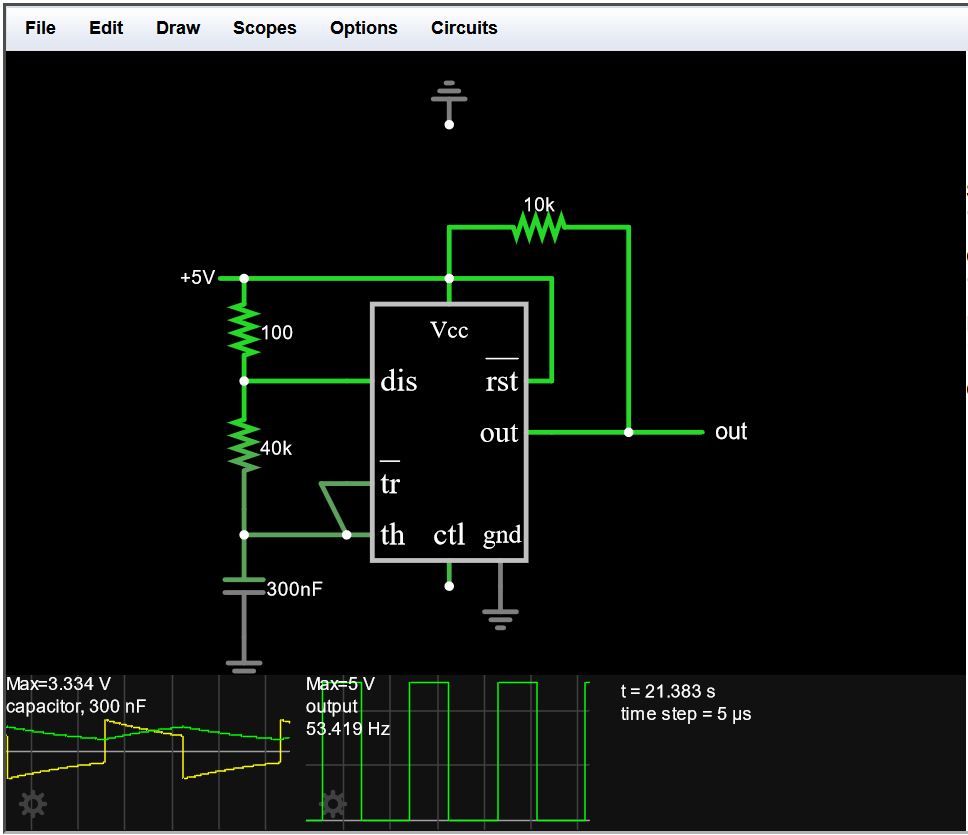I want generate a 5 volt, around 55 Hz(50-60) square wave with an NE555S-13.
In the datasheet, I found the configuration for astable operation which I assume is what I want:
 screenshot from datasheet:
https://www.diodes.com/assets/Datasheets/NE555_SA555_NA555.pdf
screenshot from datasheet:
https://www.diodes.com/assets/Datasheets/NE555_SA555_NA555.pdf
I found that the NE555S-13 is featured in the Falstad web simulator.
The problem is that in Falstad, the configuration for square generation is different and I don't know what to make of it, the main difference I see is that the "output" is pulled up to 5 volts at the Vcc pin in the datasheet's example while in the Falstad simulation it's pulled up at the trigger pin.
Is there some significant difference because when I simulated both configurations I saw seemingly similar results in the wave generation.
Is there something I am not seeing?


